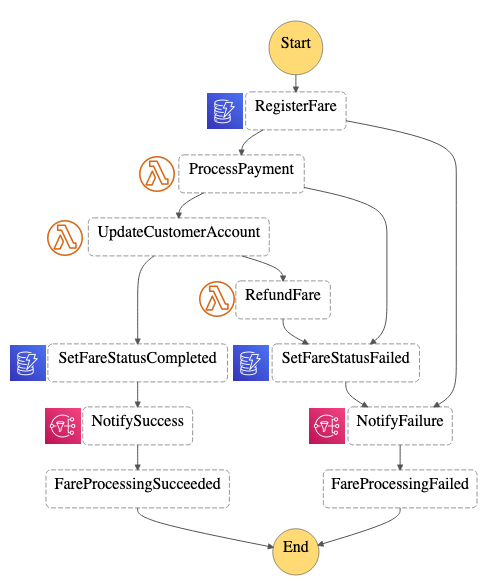AWS Compute Blog
Tag: serverless
ICYMI: Serverless pre:Invent 2020
During the last few weeks, the AWS serverless team has been releasing a wave of new features in the build-up to AWS re:Invent 2020. This post recaps some of the most important releases for serverless developers. re:Invent is virtual and free to all attendees in 2020 – register here. See the complete list of serverless […]
Using Amazon SQS dead-letter queues to replay messages
This is courtesy of Alexandre Pinhel, Specialist SA Manager, in collaboration with Guillaume Marchand and Luke Hargreaves, Solutions Architects. Amazon Simple Queue Service (Amazon SQS) is a fully managed message queuing service. It enables you to decouple and scale microservices, distributed systems, and serverless applications. A commonly used feature of Amazon SQS is dead-letter queues. The […]
New Synchronous Express Workflows for AWS Step Functions
Today, AWS is introducing Synchronous Express Workflows for AWS Step Functions. This is a new way to run Express Workflows to orchestrate AWS services at high-throughput. Developers have been using asynchronous Express Workflows since December 2019 for workloads that require higher event rates and shorter durations. Customers were looking for ways to receive an immediate […]
Creating faster AWS Lambda functions with AVX2
With the release of AVX2 for Lambda, customers can now run AVX2-optimized workloads while benefitting from the pay-for-use, reduced operational model of AWS Lambda. This feature is provided at no additional cost.
Introducing Amazon API Gateway service integration for AWS Step Functions
AWS Step Functions now integrates with Amazon API Gateway to enable backend orchestration with minimal code and built-in error handling. API Gateway is a fully managed service that makes it easy for developers to create, publish, maintain, monitor, and secure APIs at any scale. These APIs enable applications to access data, business logic, or functionality […]
Simplifying cross-account access with Amazon EventBridge resource policies
This post shows you how to use the new features Amazon EventBridge resource policies that make it easier to build applications that work across accounts. Resource policies provide you with a powerful mechanism for modeling your event buses across multiple accounts, and give you fine-grained control over EventBridge API invocations.
Tracking the latest server images in Amazon EC2 Image Builder pipelines
This post courtesy of Anoop Rachamadugu, Cloud Architect at AWS The Amazon EC2 Image Builder service helps users to build and maintain server images. The images created by EC2 Image Builder can be used with Amazon Elastic Compute Cloud (EC2) and on-premises. Image Builder reduces the effort of keeping images up-to-date and secure by providing […]
Performing canary deployments for service integrations with Amazon API Gateway
This post authored by Dhiraj Thakur and Sameer Goel, Solutions Architects at AWS. When building serverless web applications, it is common to use AWS Lambda functions as the compute layer for business logic. To manage canary releases, it’s best practice to use Lambda deployment preferences. However, if you use Amazon API Gateway service integrations instead […]
Application integration patterns for microservices: Orchestration and coordination
Using Wild Rydes, I show how to use Amazon SQS and AWS Step Functions to decouple your application components and services. I show you how these services help to coordinate and orchestrate distributed components to build resilient and fault tolerant microservices architectures.
Getting started with RPA using AWS Step Functions and Amazon Textract
This post is courtesy of Joe Tringali, Solutions Architect. Many organizations are using robotic process automation (RPA) to automate workflow, back-office processes that are labor-intensive. RPA, as software bots, can often handle many of these activities. Often RPA workflows contain repetitive manual tasks that must be done by humans, such as viewing invoices to find […]









